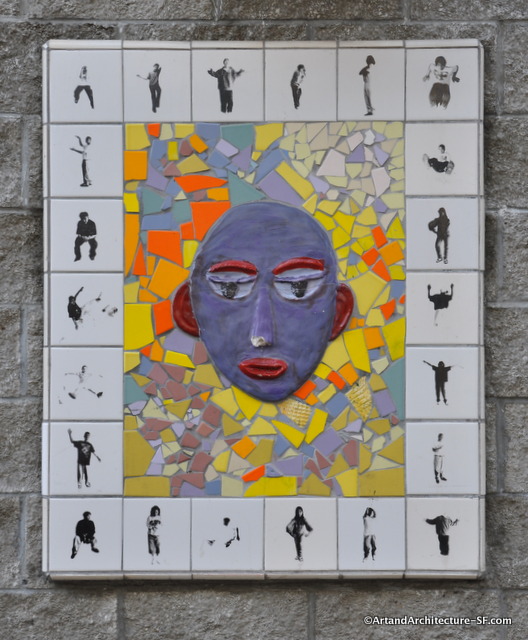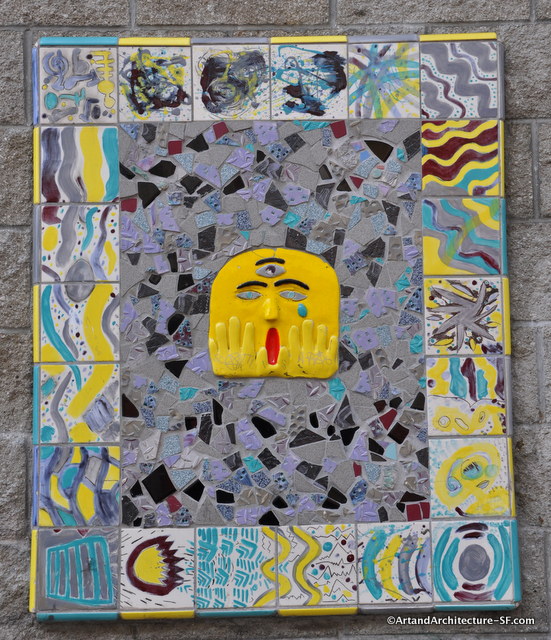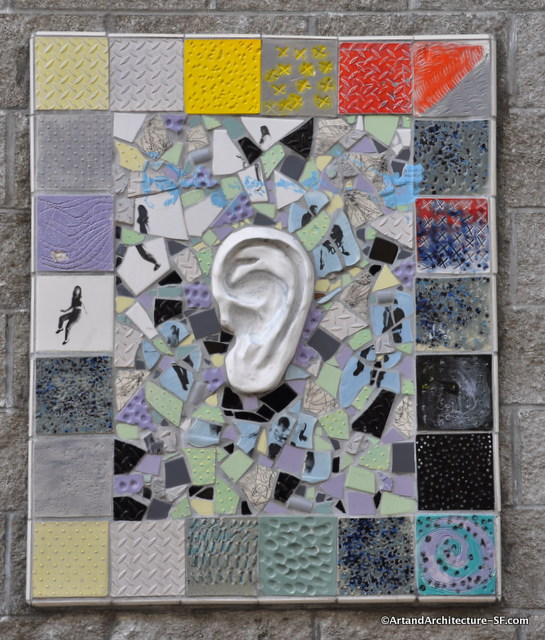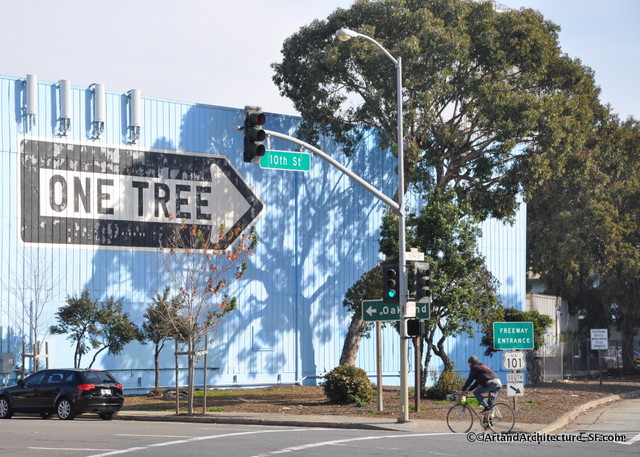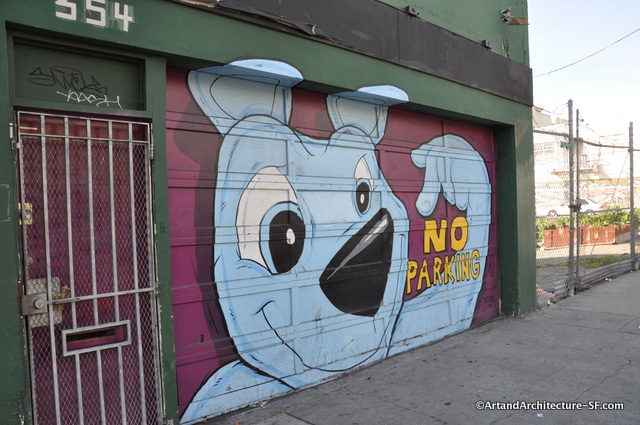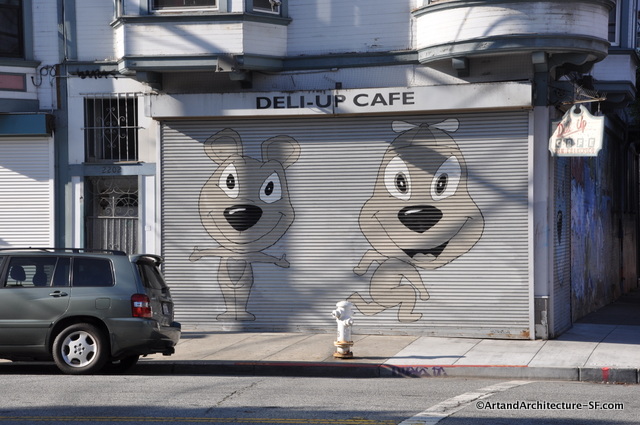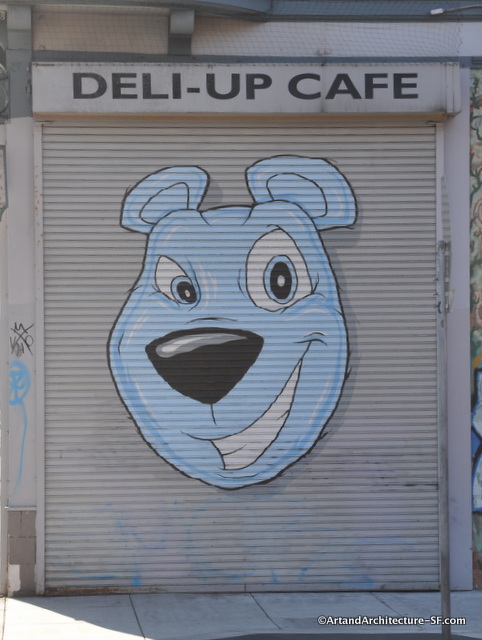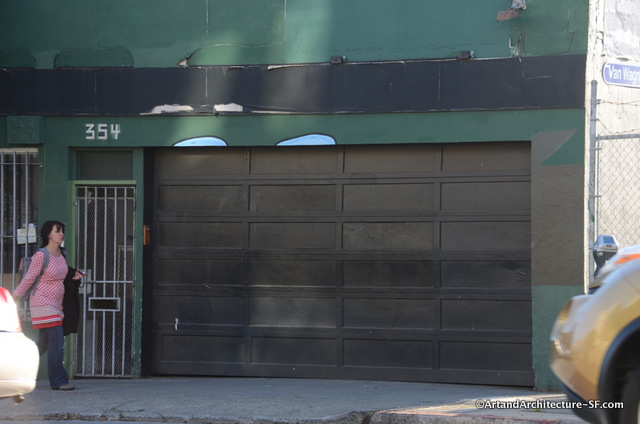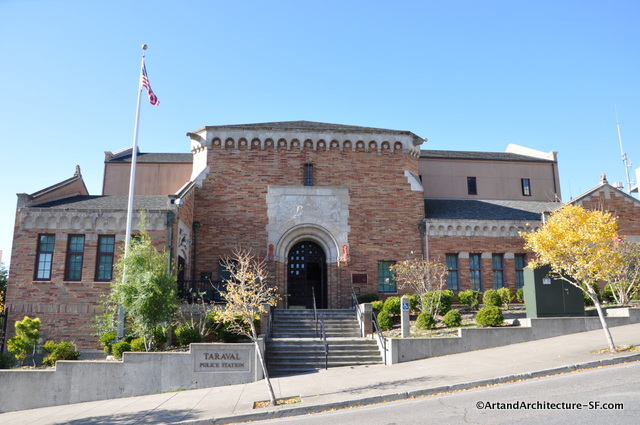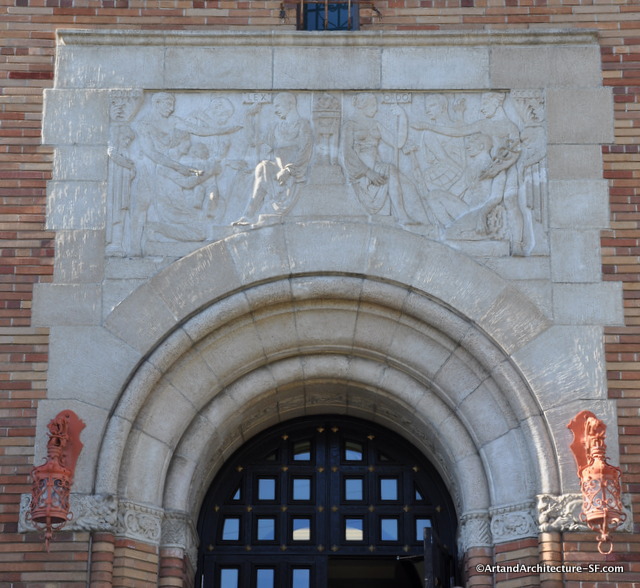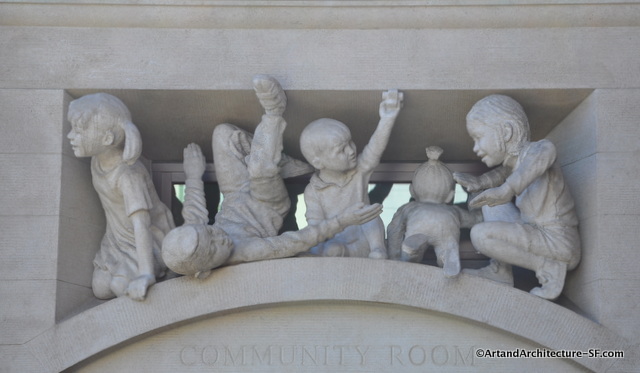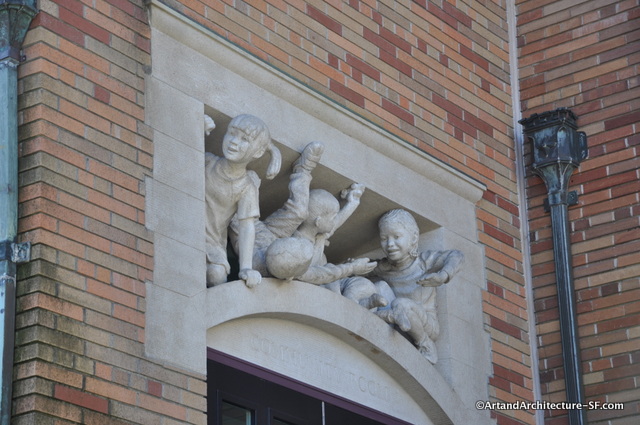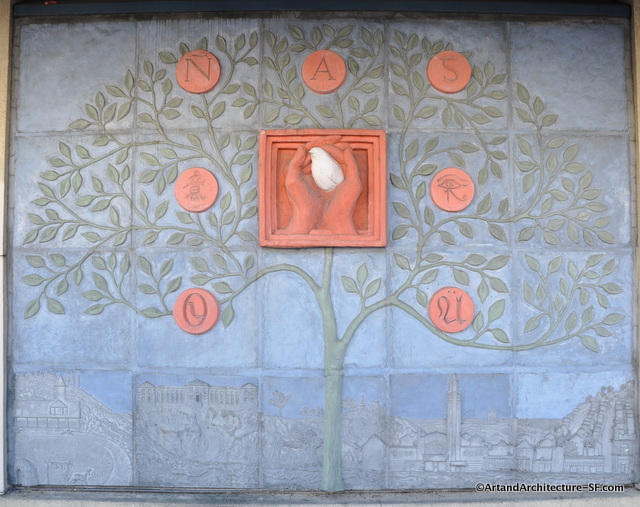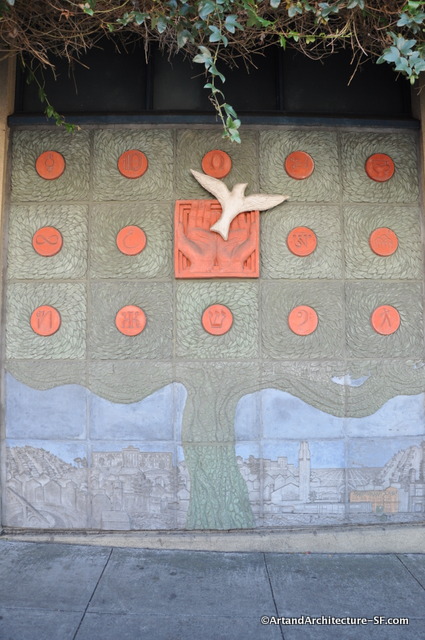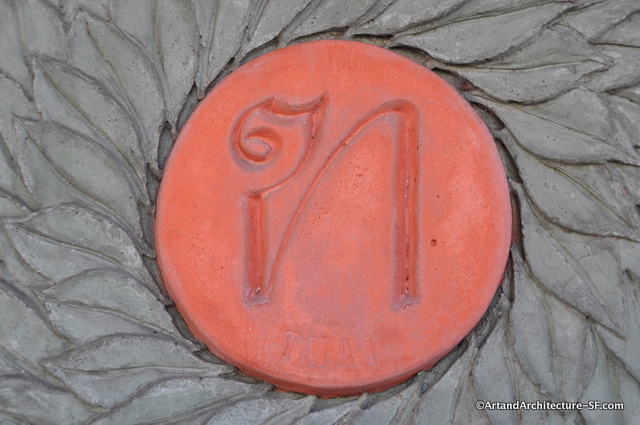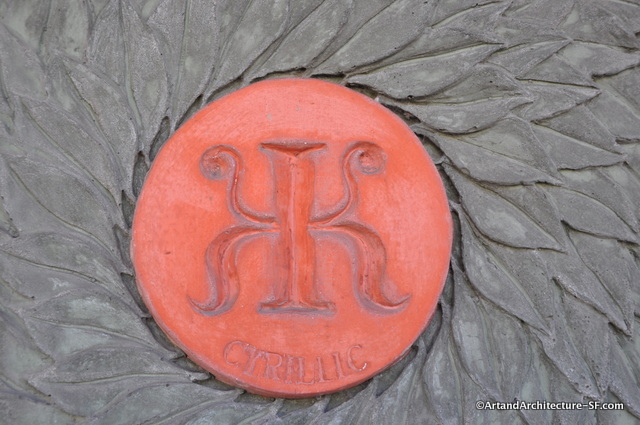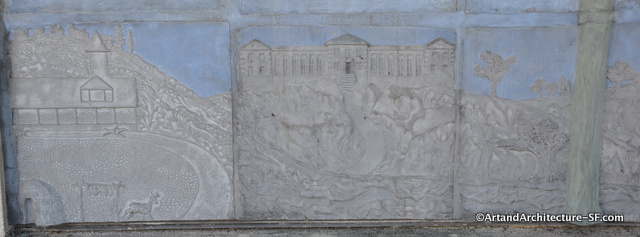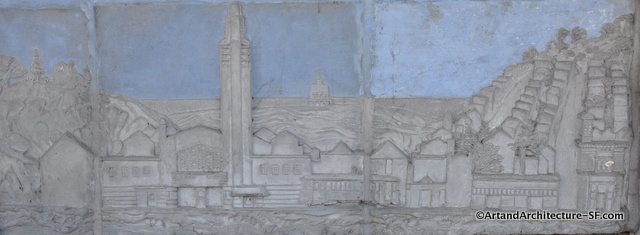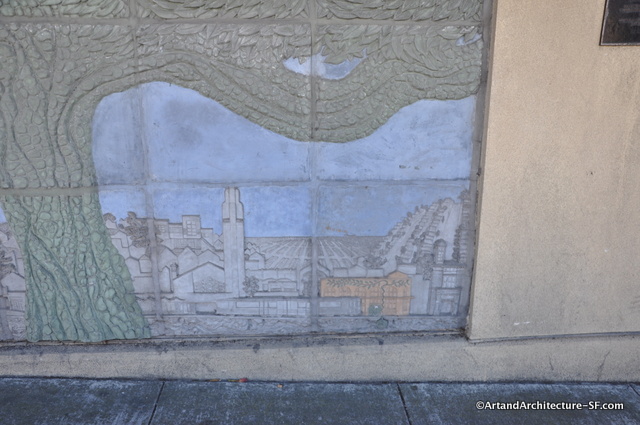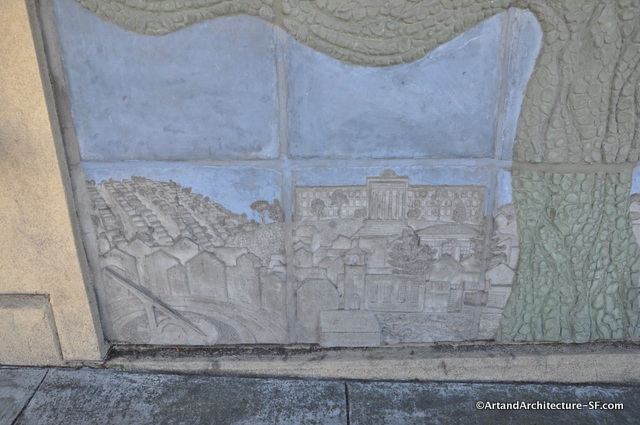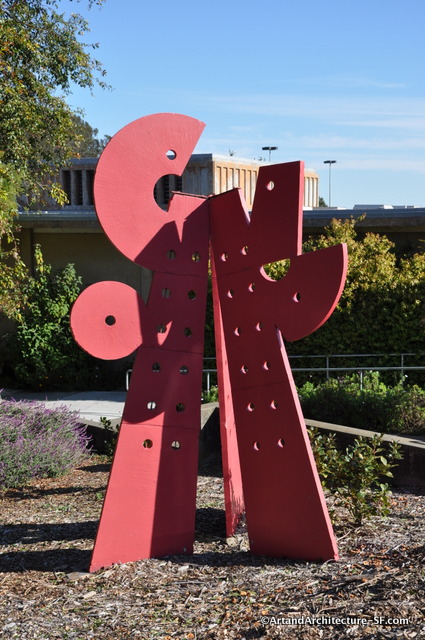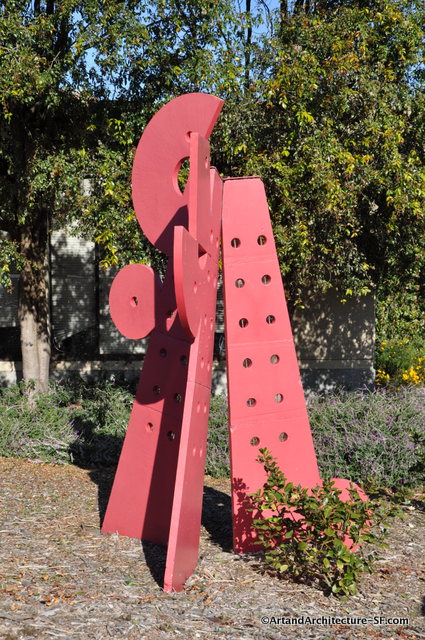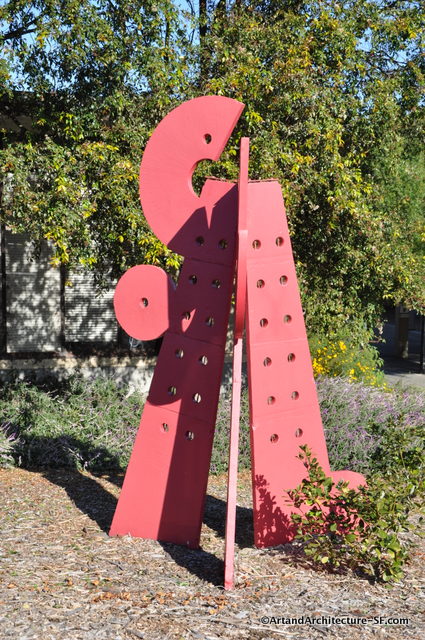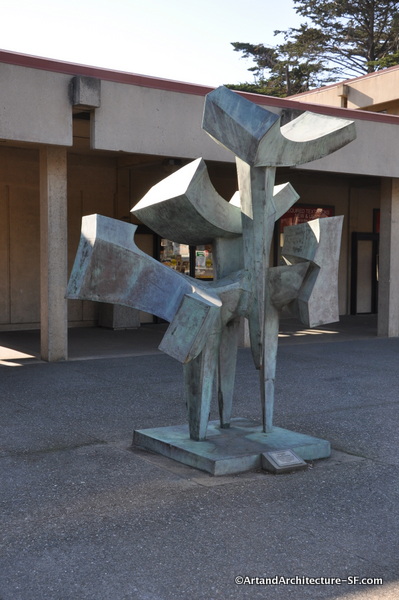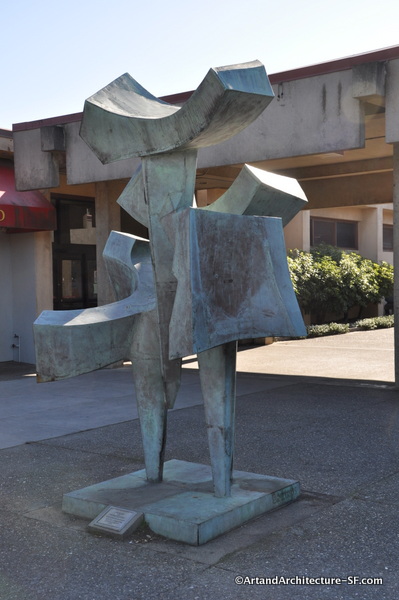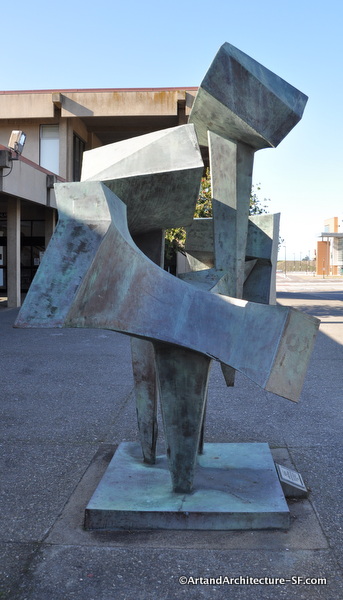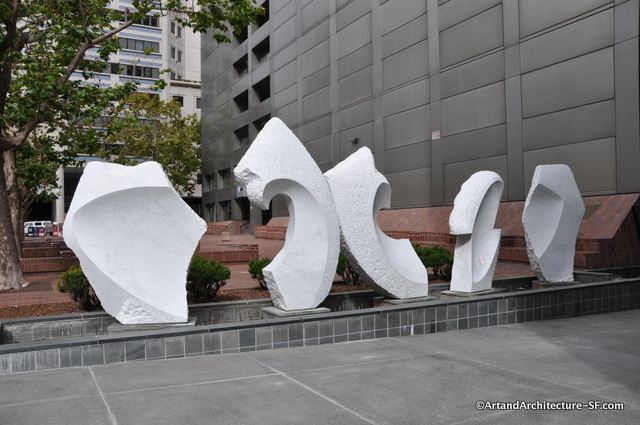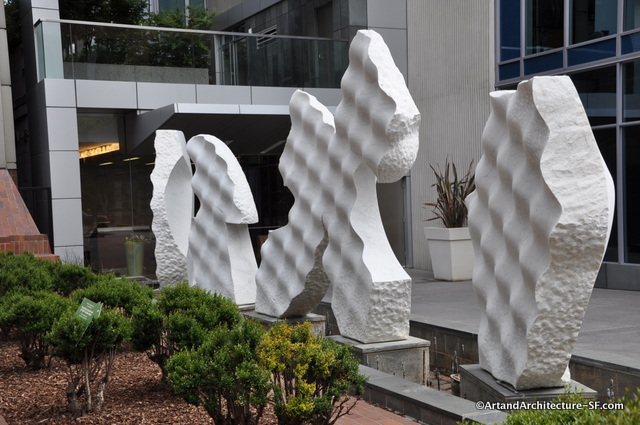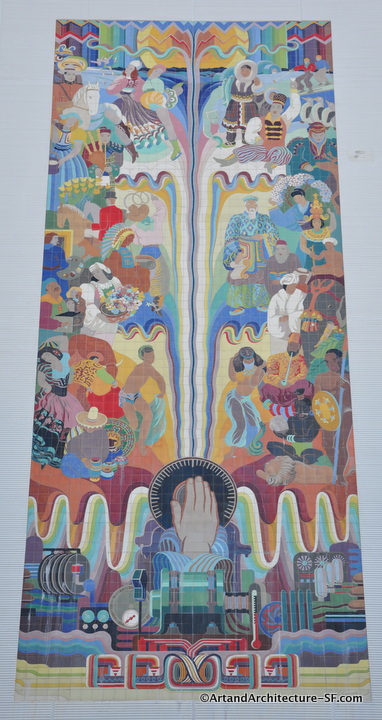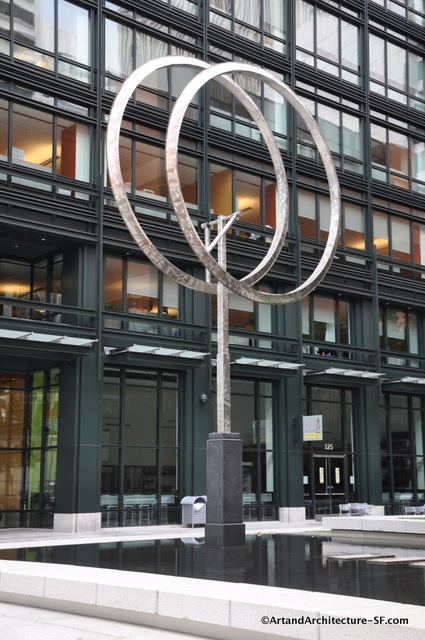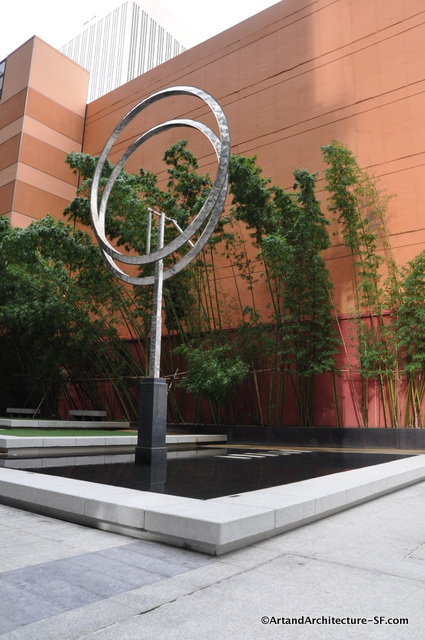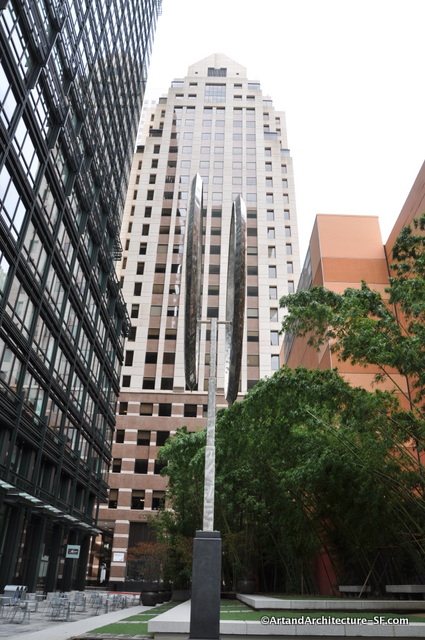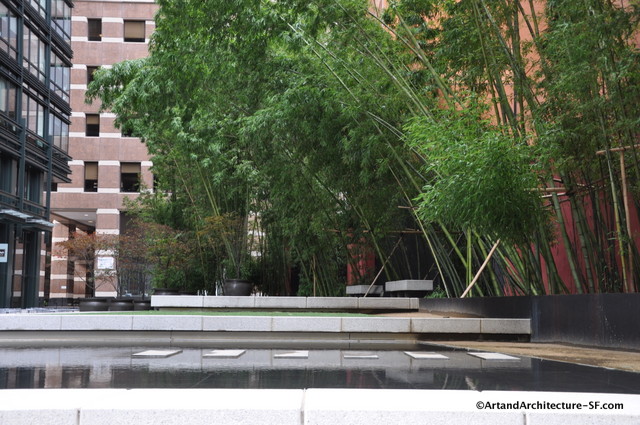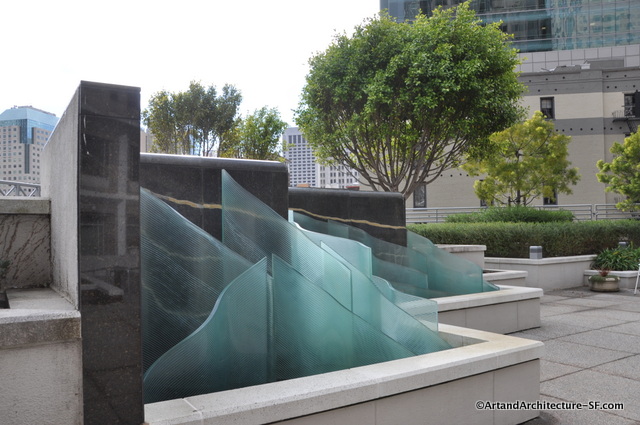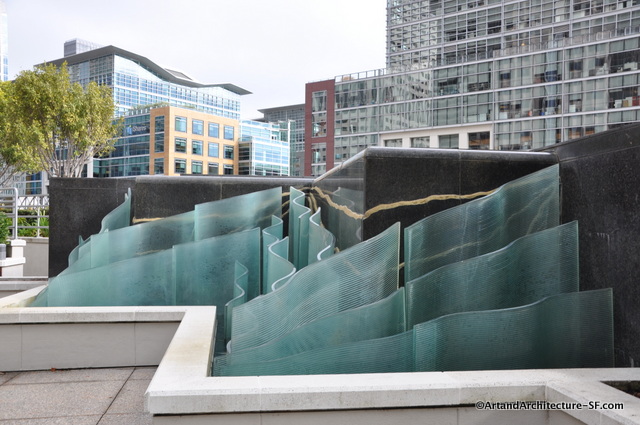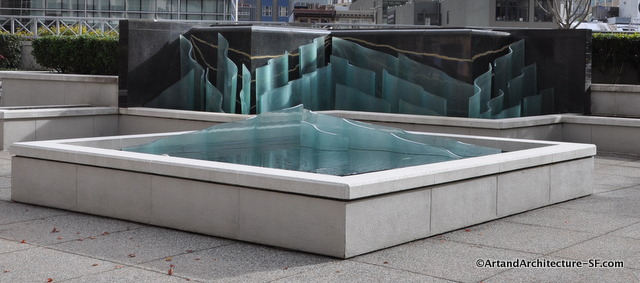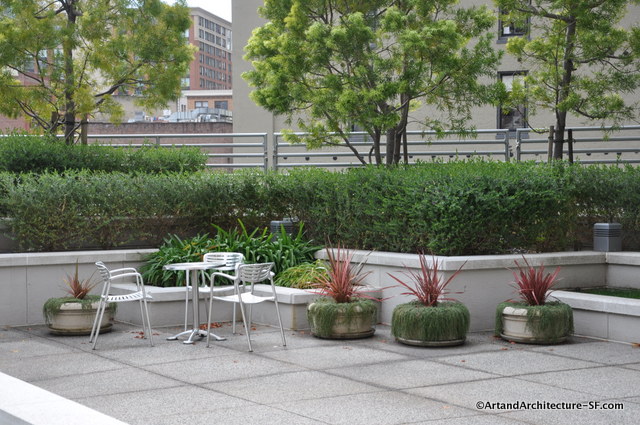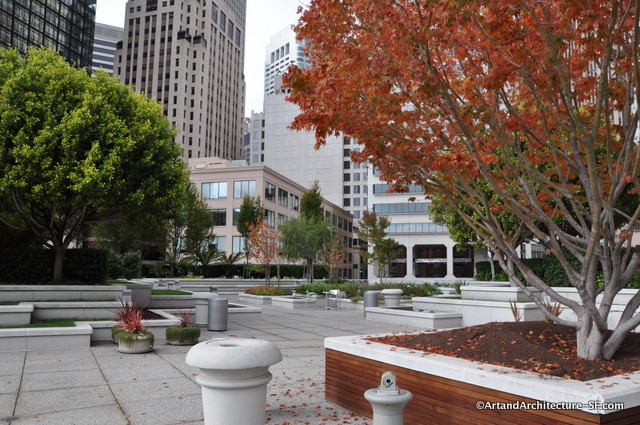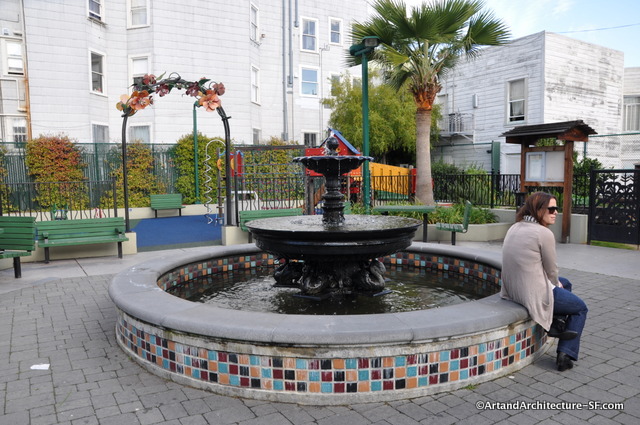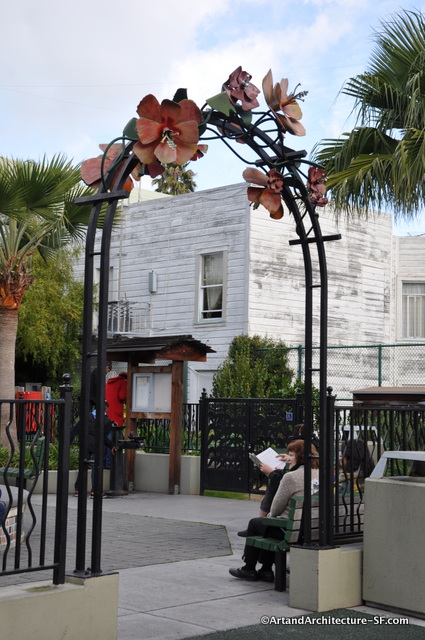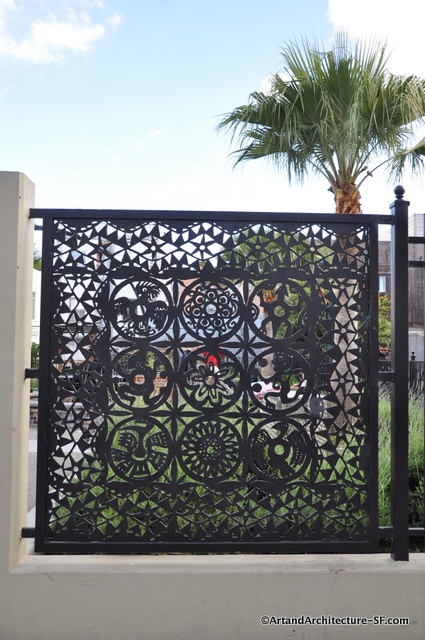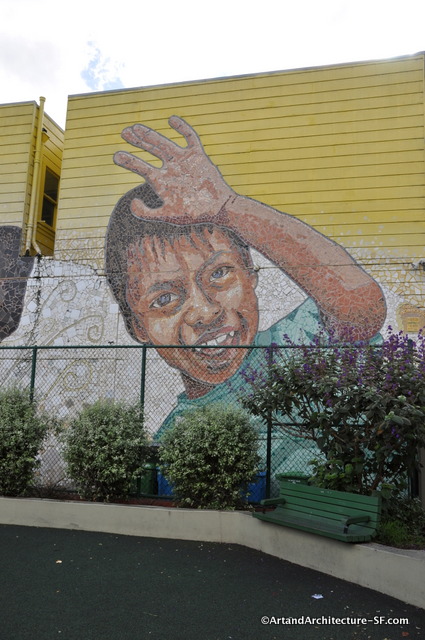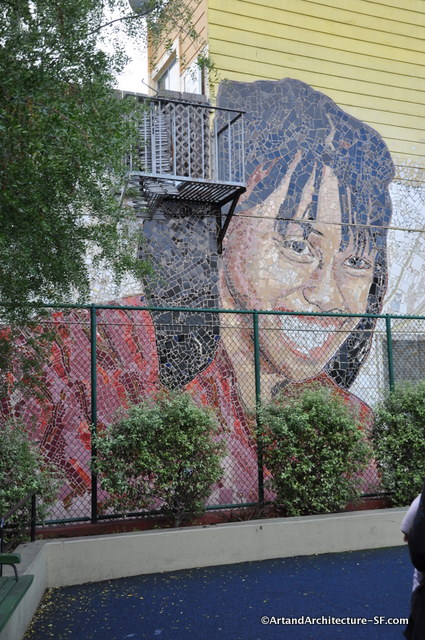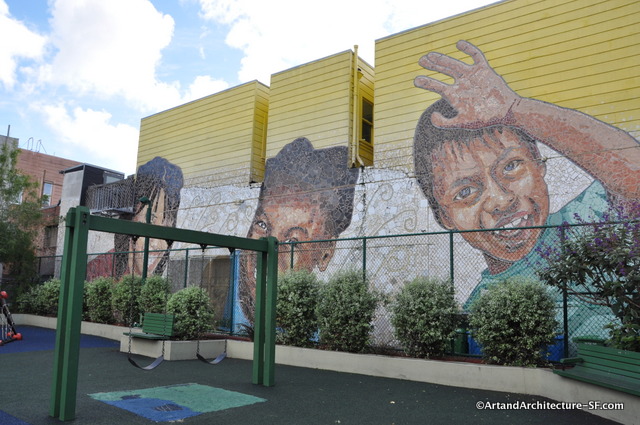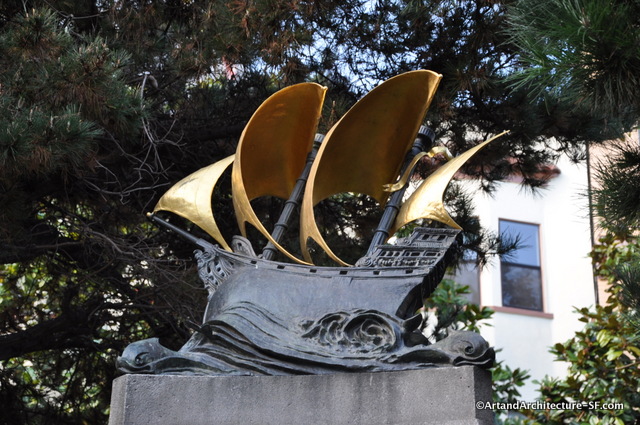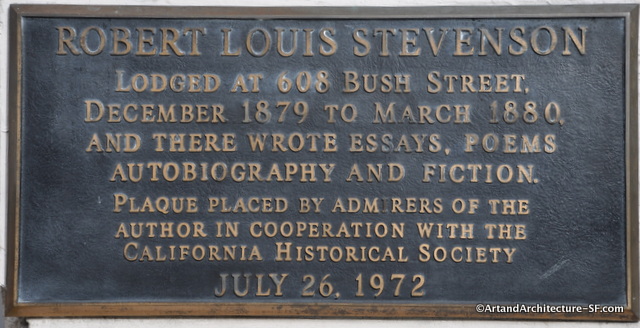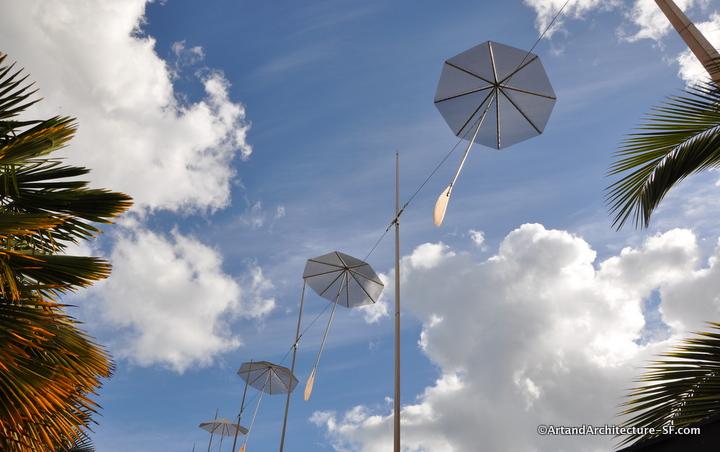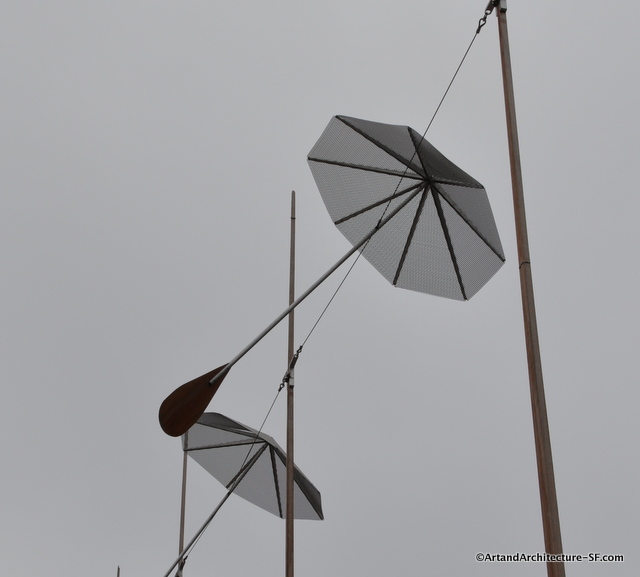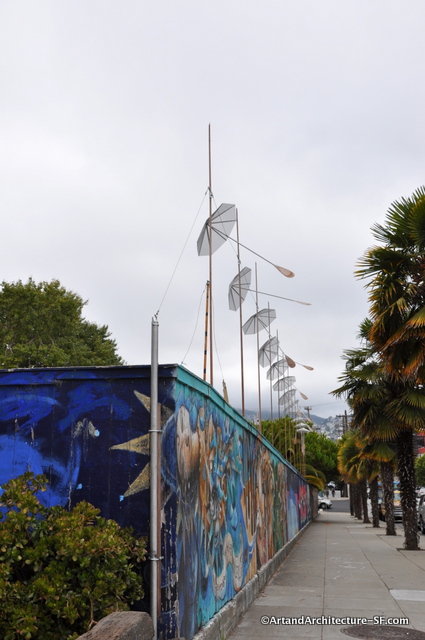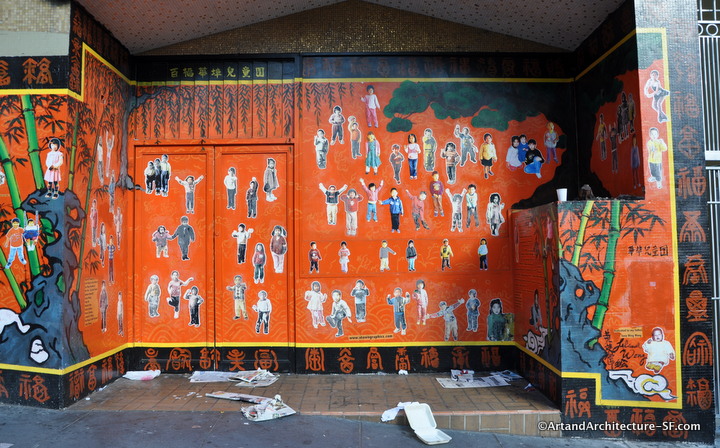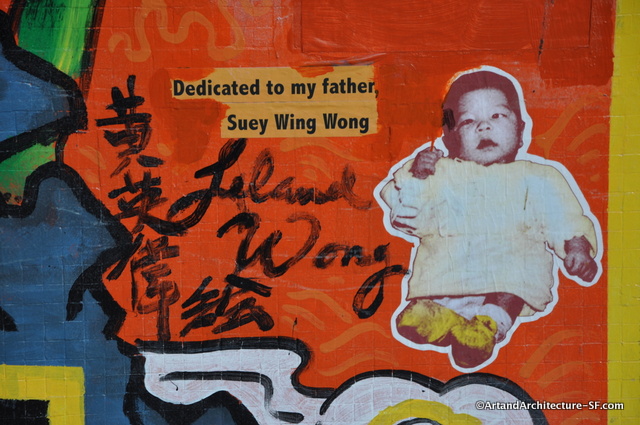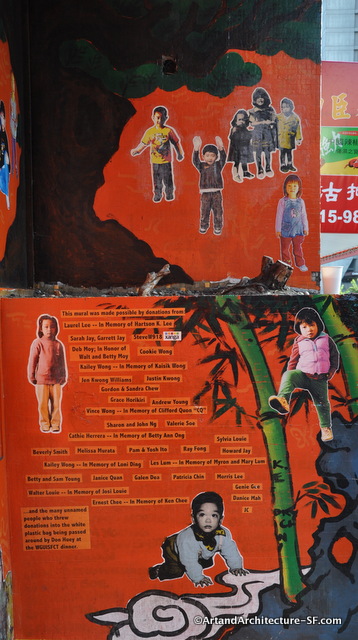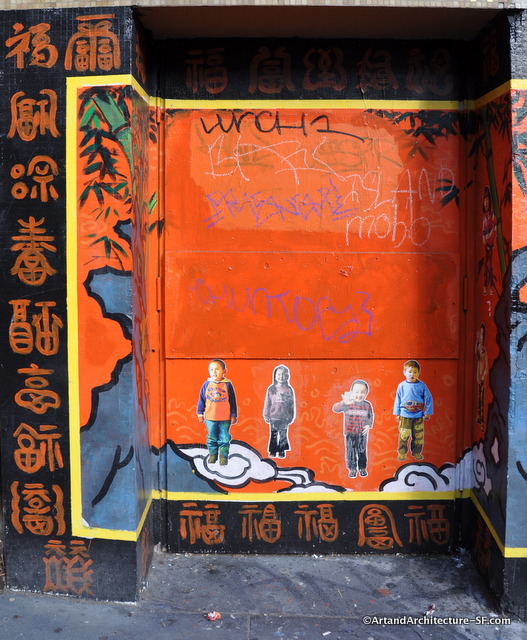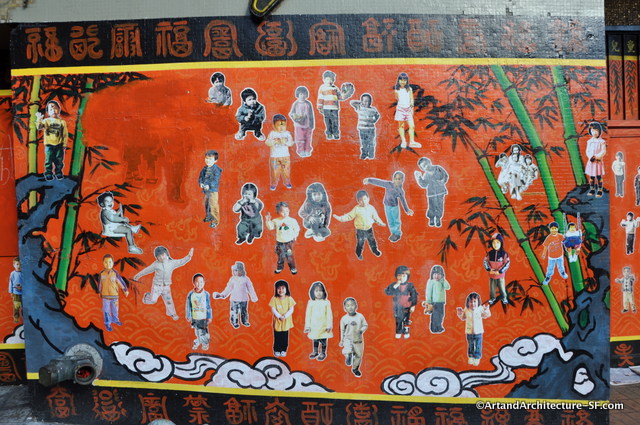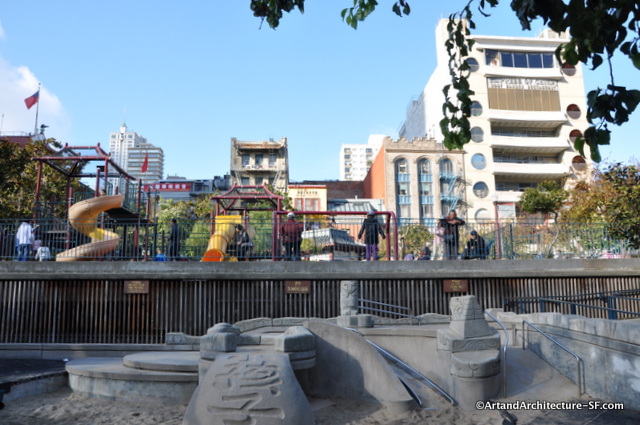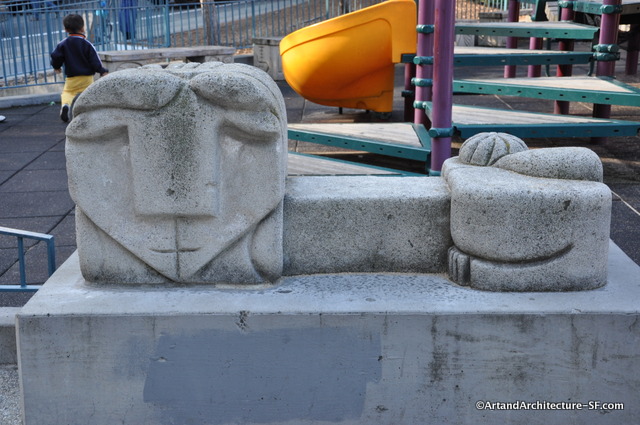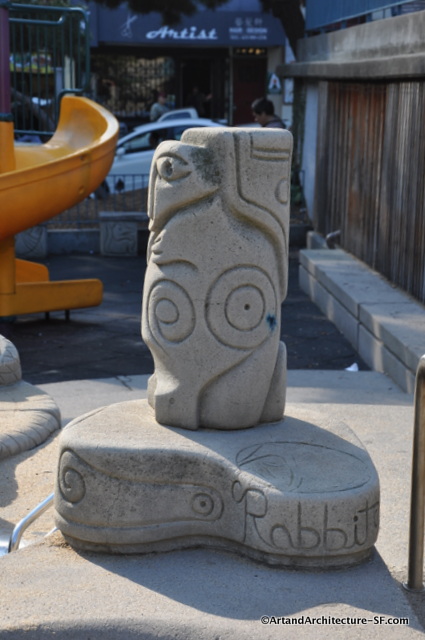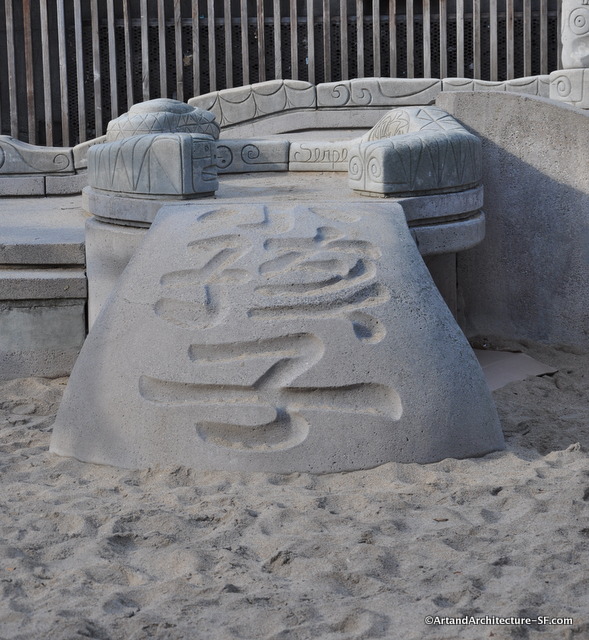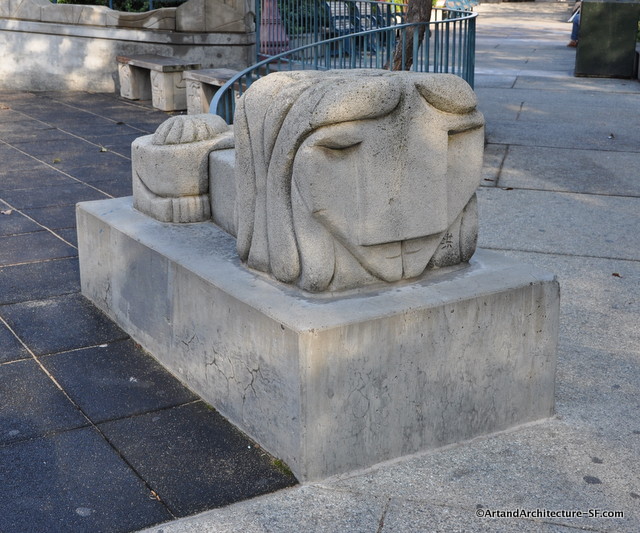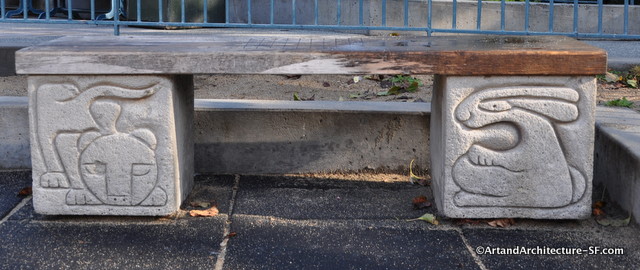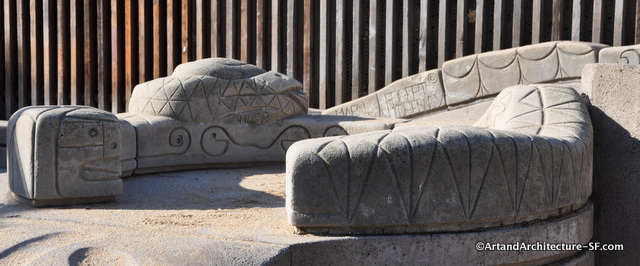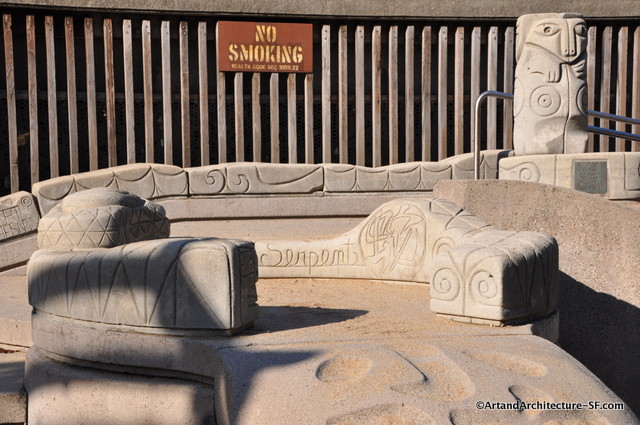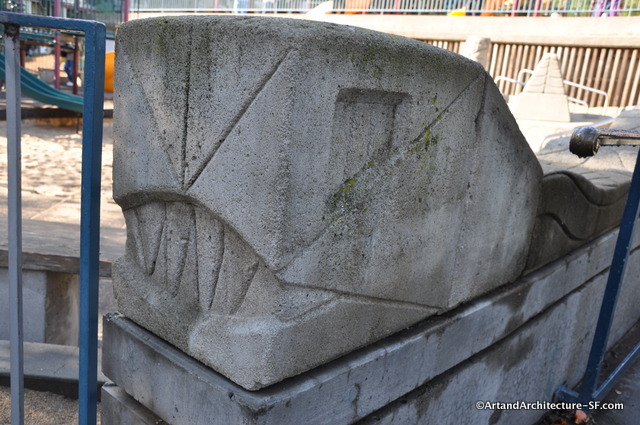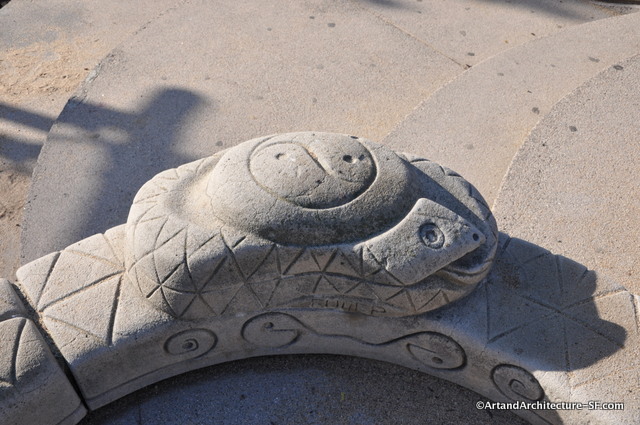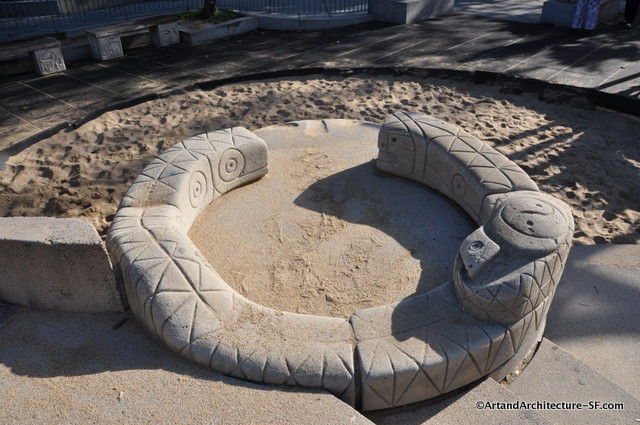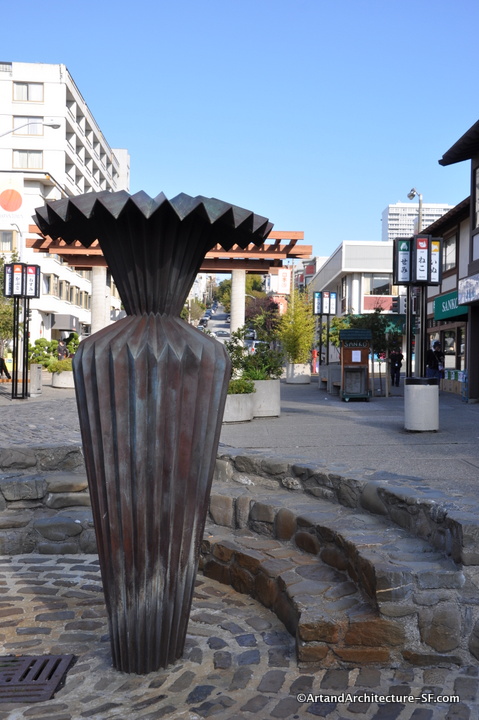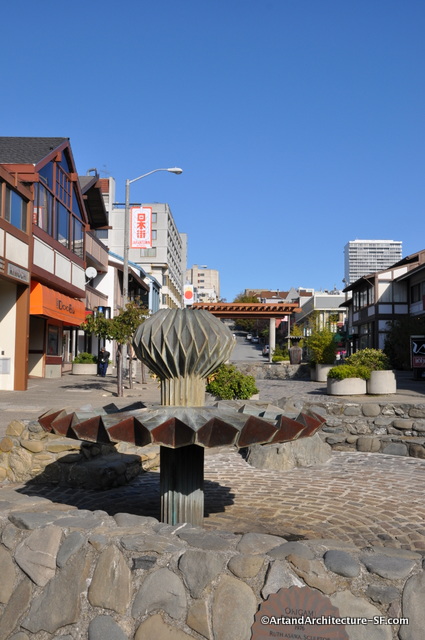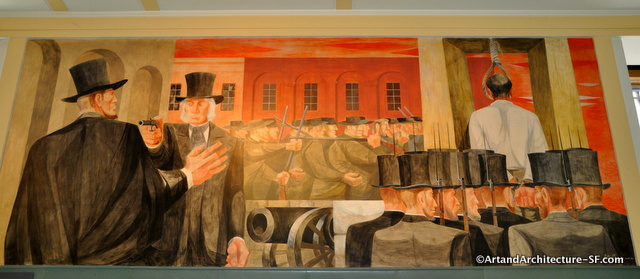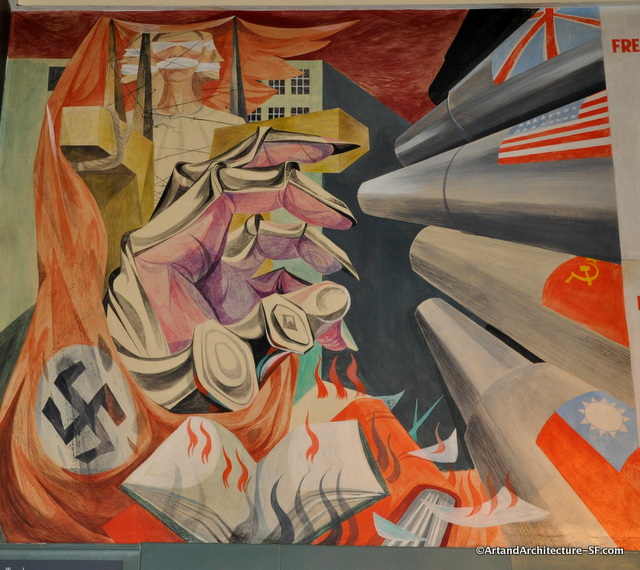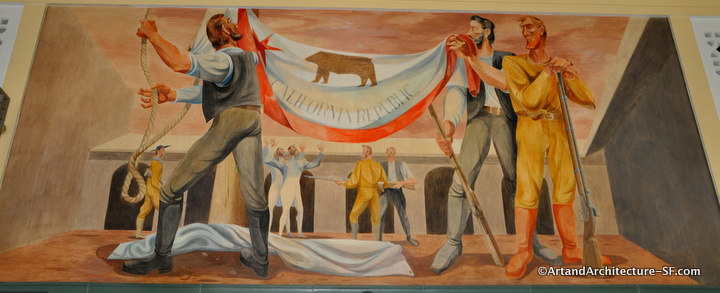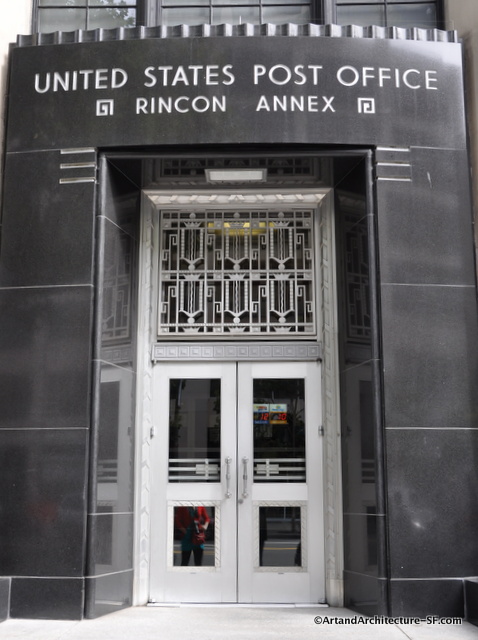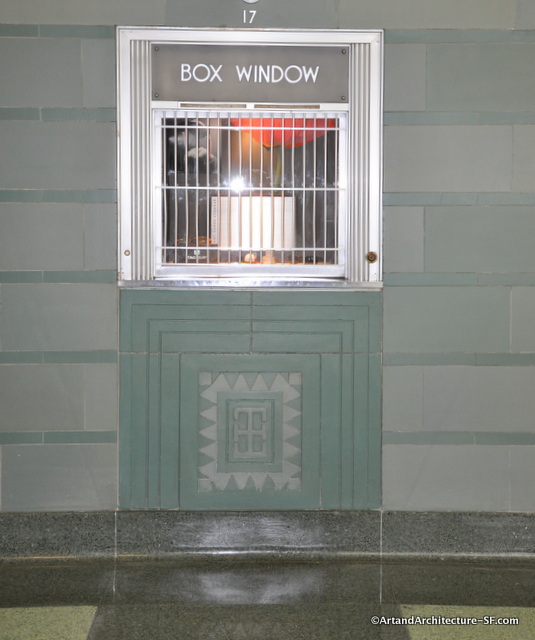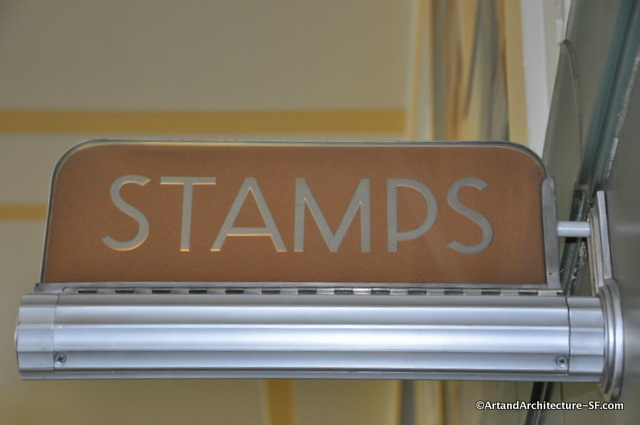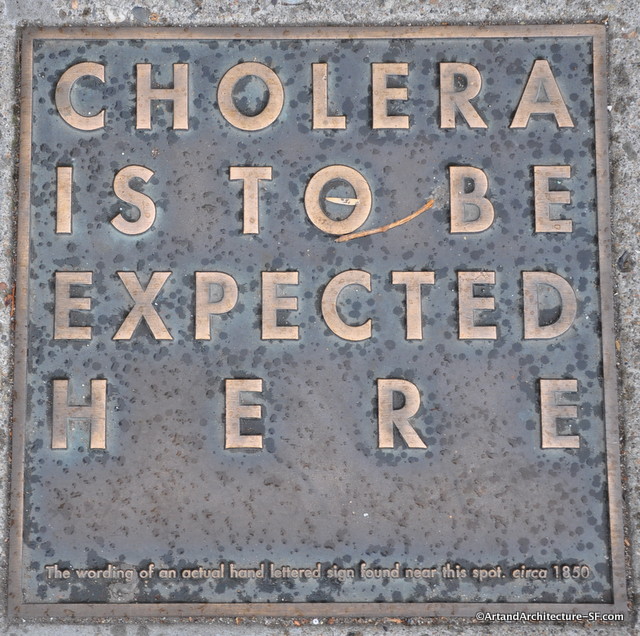The Embarcadero
Rincon Annex
98 Howard Street
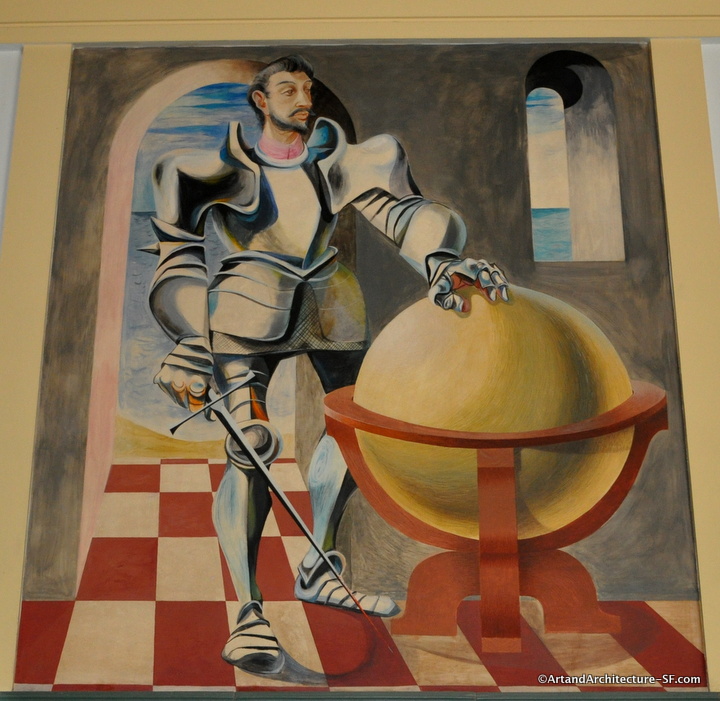 Panel #3
Panel #3
The murals in the Rincon Annex Post Office, have lived a long and very controversial life. In 1941 the WPA held a competition for the murals, it was won by Anton Refregier. He began work immediately and kept at it until they were finished in 1948, with a two year break during the war. He was paid $26,000 for the job, the largest job ever given by the WPA in the painting/sculpture arena.
The twenty-seven murals (29 panels) are actually casein-tempra (a process of painting in which pigments are mixed with casein, or egg, especially egg yolk, to produce a dull finish) on white gesso over plaster walls.
The murals underwent 92 changes while they were being painted, all results of special interest groups. If you are interested in reading the controversy and politics involved in these changes, Rob Spoor has done an amazing job in his education of City Guides.
Panel #3. “Sir Francis Drake – 1579 Sir Francis Drake, an English navigator and privateer, set sail from Plymouth (England) in 1577 on a voyage around the world. According to accounts of that voyage, Drake landed in a California harbor in June of 1579. He stayed for 36 days during which time he had good relations with the Indians, repaired his ship and claimed the land for Queen Elizabeth of England, naming it Nova Albion. The precise location of Drake’s landing is not known. Various theories suggest it may have been Bolinas Bay, Drake’s Bay, the Marin side of San Francisco Bay. Bodega Bay or Point Reyes.” Notice the blood at the end of the sword, depicting the Spanish as a bloodthirsty lot.
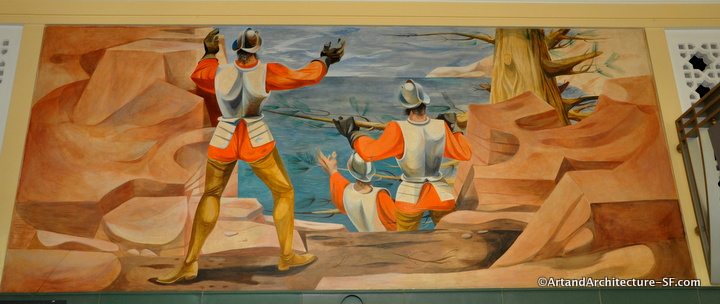
Panel #4
Panel #4 “Conquistadors discover the Pacific Baja California was discovered by Europeans in 1533 by a man named Fortún Jiménez of the Cortés expedition. By 1540, Ulloa, another member of that expedition had explored the Sea of Cortés. Also in that year Hernando de Alarcón had sailed up the Colorado River and in 1541 Francisco de Bolaños explored both sides of the Baja Pennisula. The first European to explore Alta California, the land above the Baja Pennisula, was Juan Rodríguez Cabrillo who sailed to the Santa Barbara Islands in 1543.”
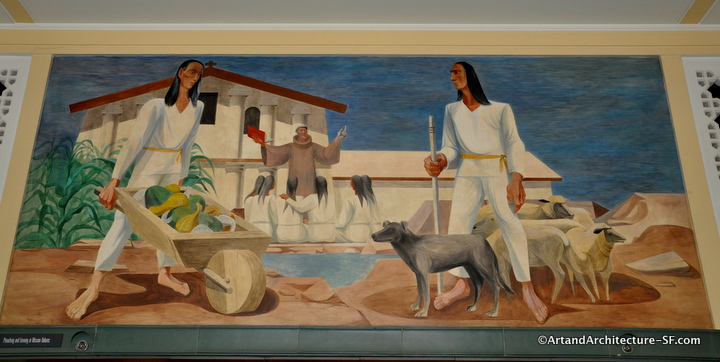
Panel #6
Panel #6. “Preaching and Farming at Mission Dolores The purpose of all California Missions was to Christianize the Indians. In addition to religion, the Indians learned farming, building, spinning and other basic skills. All instruction was given in Spanish.” According to Spoor the Catholic Church protested the large belly of a friar depicted in a Mission Dolores mural while the Indians appeared gaunt. In response to these objections, Refregier performed “artistic liposuction”.
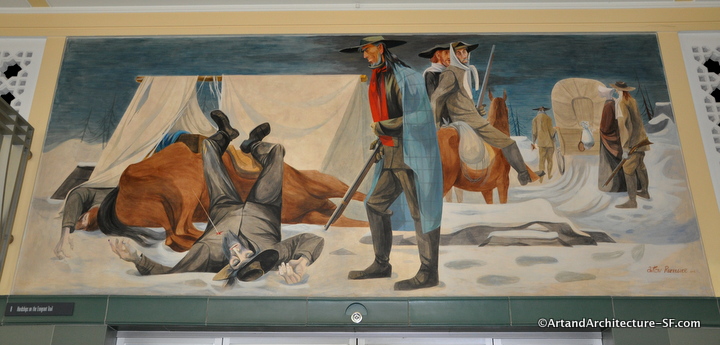
Panel #8
Panel #8 “Hardships on the Emmigrant Trail The Emigrant Trail was a term used to describe various overland routes to California in the 1840’s and 1850’s. The subject of this panel is the trail through Donner Pass in the Sierra Nevada mountains of California. Both Donner Summit and Donner Lake are named after the Geroge and Jacob Donner brothers of Illinois. Their party of 87 settlers were forced to spend the winter of 1846 along the shore of Donner Lake after being trapped by heavy early November snows. Only 47 group members survived.”

Panel #24
Panel #24. Titled – “The Waterfront 1934. This controversial panel depicts events surrounding the San Francisco dock strike of 1934. On the left a shakedown operator demands bribes in exchange for longshoremen jobs. The center shows labor organizer Harry Bridges addressing dockworkers. The right third refers to what is known as “Bloody Thursday, July 5, 1934, when employers battle strikers to open the docks. Two longshoremen died and many on both sides were injured.”
Again, according to Spoor, The VFW and even some labor organizations were incensed that labor organizer and alleged Communist Harry Bridges appeared to be rallying workers, including one with a VFW insignia on his hat, in the mural “Maritime and General Strike,” and pointed out several inaccuracies in the three historical events depicted. The longshore workers union was especially sensitive to the association with 1930s-era Communism, from which they’d distanced themselves by the late 1940s. In response to their objections, Refregier painted out the VFW symbol.
From: Anton Refregier: Renaissance Man of WPA
Of the 27 panels covering the walls of Rincon, the most widely reproduced (via silkscreen) is the scene “San Francisco ’34 Waterfront Strike,” which takes on the 82-day strike that crippled the shipping industry all along the West Coast. Workers were striking against low wages caused by corruption and graft, and before the outrage and rioting died down, three men were killed, out of the 31 who were shot by police and the dozens who were beaten and assaulted with gas. Refregier did not paint violence or defeat in his mural, but instead focused on the solidarity of the union workers.
All these descriptions can be found on plaques near the murals.
